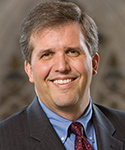When facing difficulties, many of us have been trained to define the challenge, brainstorm possibilities and create solutions to take to stakeholders for their support. Such a process works OK if a problem is merely hard; after all, our supervisors, donors and board members want us to provide leadership, including solving problems.
But when a problem is “wicked,” our impulse to bring a solution to stakeholders -- rather than engaging them in generating the solution -- won’t adequately address the challenge.
Solutions to a wicked problem can only be found by expanding our field of vision and attacking the problem from various angles. Too often we have mistakenly tried to treat genuinely wicked problems as if they were merely hard problems, and have belatedly discovered that rolled-up sleeves and sweat equity haven’t gotten us where we need to be.
How do we expand our vision and come at a wicked problem from diverse angles? Identifying and engaging stakeholders at the outset of the process is critical.
Engaging stakeholders early in the process will often expand an institution’s view of the salient features of a wicked problem. Because institutions are often intimately involved with some particular dimensions of the problem they are trying to solve, their leaders tend to overlook other, more subtle dimensions of the problem.
To one institution, poverty is about educational disparities; to another, it’s about access to affordable health care. Each homes in on its own conception of poverty’s salient features but may often be unable to see the bigger picture. And neither may notice the significance of job training or economic development opportunities, much less the often intangible yet deep significance of friendships in offering social networks of support.
Because both personal and institutional stakeholders think and work in diverse contexts, they are more likely to provide distinctive lenses on the issues and thus broaden the institution’s views and understanding of the trends affecting the ecology in which they work.
A stakeholder active in the medical world, for example, could help an institution see that the relationship between educational disparities and poverty is also deeply connected to issues of access to affordable health care. The institution could then begin to reframe its approach to poverty, now addressing features of the problem it previously considered tangential or even irrelevant. Indeed, because the character of wicked problems changes the more we work on them, reframing the salient features of a wicked problem is a task no institution can afford to ignore.
To be sure, stakeholders can also compound the problems an institution is facing. Stakeholders often loom large in their financial, regulatory or governing role and are seen only as groups to manage rather than people to include in framing problems and designing potential solutions. To avoid this way of thinking, institutional leaders can outline the work process and include within it opportunities for mutual learning.
One of the first steps in the process should be to engage in one-on-one interviews with a wide range of stakeholders -- including those who are closest to and perhaps most financially invested in the institution. It is equally important, and sometimes even more illuminating, to include potential new partners who are less directly involved yet are able to articulate deep yearnings and provocative insights that can stir the institution’s imagination.
How do you decide who are the right stakeholders to engage? Some will be obvious, but it is important also to look beyond the familiar to find organizations and people who may seem tangential but bring perspectives and wisdom that haven’t been considered thus far.
Engaging stakeholders through extensive interviews will likely surface a wide range of diagnoses of the problem(s) as well as a wide range of possible solutions. Even some insiders, when discussing well-formed questions, open up with candid and thoughtful reflections not often found in a typical organizational meeting.
Once extensive one-on-one interviews have been conducted, mostly by people within the organization who are trained to do so, stakeholders can then be engaged in a retreat setting with key institutional leaders. The retreat provides an opportunity for institutional leaders and stakeholders to digest the learning from the interviews, and to probe the initial questions and see how the wicked problem(s) might be reframed in light of what has been learned.
It is especially important in the retreat to engage face to face a wide array of perspectives -- what we would call “the relevant cognitive diversity.” This may include different disciplinary or organizational perspectives, cultural or gender backgrounds, or styles of working on problems.
We often think about the importance of diversity in forming groups, but here “cognitive diversity” is especially important (about which we will write more in our next reflection). Indeed, many have persuasively argued that the most innovative and generative ideas emerge by engaging more people than we ordinarily do, both throughout the process and in a retreat.
One recent example comes from Steven Johnson’s “Where Good Ideas Come From: The Natural History of Innovation.” Johnson traces the history of innovative ideas, highlighting several features they hold in common.
In particular, he wonders why coral reefs, cities and the Internet all account for a disproportionately large amount of innovative activity. Why do coral reefs support an abundance of species life when oceanic areas less than a mile away are barren? Why do cities inspire the most cutting-edge scientific research, and why does the Internet have the capacity to generate innovative ideas -- like eBay and YouTube -- at an exponential rate?
The answer, he discovers, lies in the nature of good, innovative ideas themselves. “Good ideas may not want to be free,” he writes, “but they do want to connect, fuse, recombine”. They do so in environments with specific characteristics that facilitate that connection, fusion and recombination.
For example, innovative ideas are more likely to be found in environments that encourage the exploration of what Johnson calls the “adjacent possible.” Innovation doesn’t happen by randomly exploring exotic, uncharted territory; it happens by exploring the possibilities of nearby resources. “The trick to having good ideas,” Johnson suggests, “is not to sit around in glorious isolation and try to think big thoughts. The trick is to get more parts on the table.”
The true innovator, then, brings all the parts she can onto the table together. Then she begins to explore their related possibilities.
Our Generative Solutions process engages stakeholders both through one-on-one conversations, in order to generate as broad a set of perspectives as possible, and in a retreat, where those perspectives can be distilled to ensure that the problem is as well-framed as possible. Once people believe they have framed the wicked problem well, the latter part of the retreat can focus on designing experiments to see if they can offer generative solutions.
Stakeholders are crucial to the institution’s design and execution of the experiments in multiple ways: in asking important questions, in providing conceptual expertise, in cultivating networks of relationships and in providing financial support, especially to ensure that if the experiments are successful, there will be a business model to enable sustainability and scalability.
The more people and partners you bring to the table, the messier things can become. Yet when we’re dealing with wicked problems that require innovative and generative solutions, messiness proves to be fertile soil. And when a generative solutions process brings some order to that messiness, improvisation occurs -- and good ideas happen.












